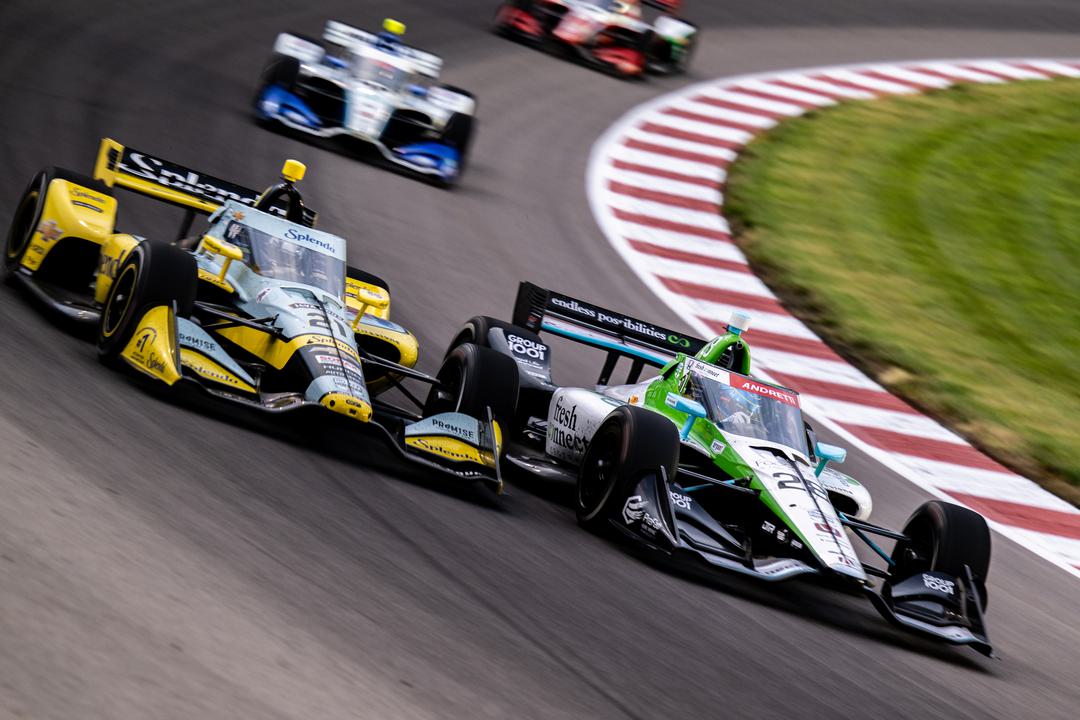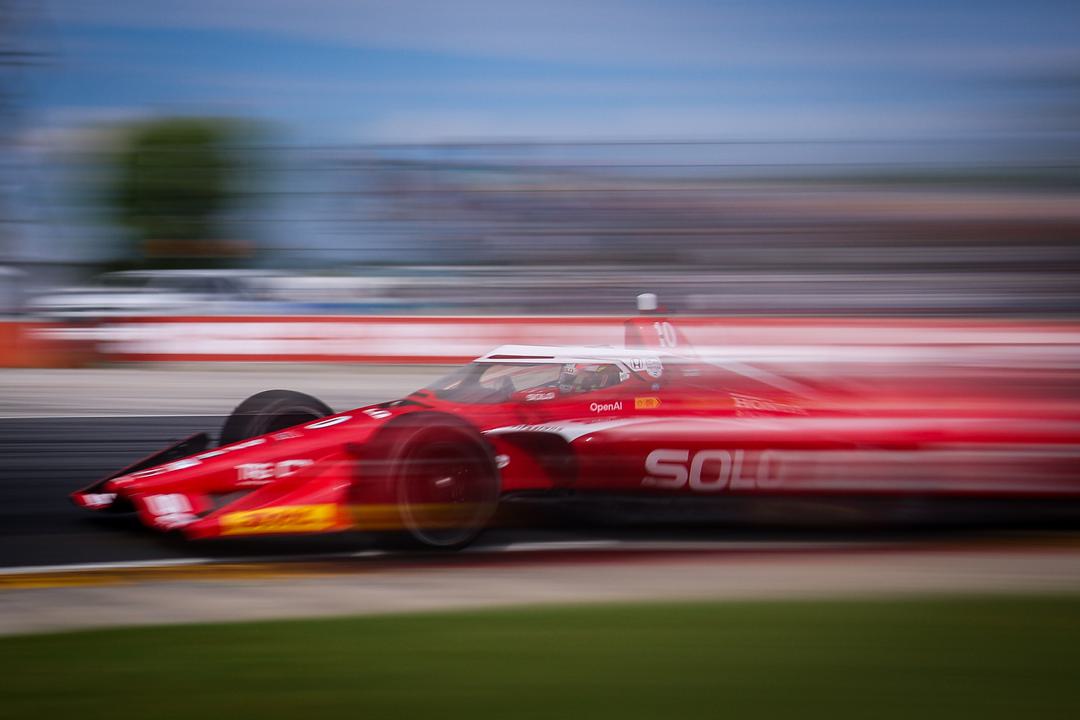Nine races down, eight to go, and just under 60 days left in the season.
Starting with a few of the major year-to-year changes and surprises, let’s explore some of the takeaways from the first half of the IndyCar championship ahead of this weekend’s return to action at the Honda Indy 200 at Mid-Ohio.
ARROW McLAREN
The most significant power shift in the paddock belongs to Arrow McLaren. Under the guidance of first-time team principal Tony Kanaan, and thanks to the addition of Christian Lundgaard, Arrow McLaren has moved to the front of the Team Chevy line for the first time in its history and displaced Team Penske as the Bowtie’s best and most consistent performer.
This has been a huge development for the McLaren-owned organization after Penske served as the tip of Chevy’s IndyCar spear for nine straight seasons. Penske’s drivers led Chevy to championships in 2016, 2017, 2019 and 2022, and when they weren’t winning titles, Penske produced the highest-placed Chevys in the standings.
With the exception of the opening race of 2025 at St. Petersburg, Arrow McLaren’s Pato O’Ward and Lundgaard have been the top two drivers in the championship for Chevy from the second race at Thermal through the ninth and most recent race at Road America.
O’Ward holds third in the championship behind the Honda-powered duo of Alex Palou and Kyle Kirkwood, and Lundgaard, who fluctuated between second and third through the Indy 500, is sixth after a rough close to June. Penske’s leading driver all season has been Will Power in seventh, and he has teammate Scott McLaughlin close behind in eighth. Penske’s Josef Newgarden is 17th.
Lundgaard is within striking distance for Power and McLaughlin, but catching O’Ward to continue Penske’s streak for a 10th season will be a challenge. Power needs 31 points to draw level with Lundgaard and McLaughlin needs 38. To reach O’Ward, Power is staring at 78 points and it’s 85 for McLaughlin. It’s not an impossible task, but O’Ward’s season would need to collapse, and quickly, for a Penske driver to become Chevy’s top pilot in the championship.
TWO MORE McLAREN BITS
In concert with McLaren’s rise as a team, O’Ward has done a solid job of handling the extreme pressure that’s been applied by his new teammate. Lundgaard was determined to make a statement on debut at Arrow McLaren and succeeded in his mission as he was locked into the top three with Palou and Kirkwood with three podiums in the first four races. And then O’Ward perked up at the fifth race and took second place, and then third at Indy, seventh at Detroit, and second at WWTR before he and Lundgaard had forgettable days at Road America.
What looked like troubling times to open the year for O’Ward has stabilized in his favor, but half of the remaining races are road or street courses where Lundgaard can draw down the 47-point deficit to O’Ward. However, the other four races – all ovals – are also where O’Ward is in a different league, so the internecine battle between the two is likely settled as it stands today. Lundgaard can move up in the championship, but a lot of bad luck would need to fall on O’Ward at Iowa’s doubleheader, Milwaukee and Nashville to swap championship positions. Let’s also not forget that O’Ward won at Mid-Ohio last year, and that of his seven career IndyCar victories, 57 percent have been on road and streets.

Arrow McLaren’s not just Pato O’Ward’s team anymore. Chris Jones/IMS Photo
And what a fun half-season it’s been in watching these hunter-killers orbit each other under the same tent. For O’Ward, this isn’t the same situation he had with former teammates who were the clear No. 2 drivers based on speed and finishing positions. Lundgaard is the fastest driver Arrow McLaren has placed next to him, and the threat is real. In nine races, he’s delivered six top 10s while learning a new team, new engineer, and new engine. If Lundgaard can raise his oval game to equal O’Ward – which isn’t guaranteed – we’ll have some real fireworks that push the Mexican to his limits.
Also, in a new IndyCar twist for Lundgaard, he’s learning how to deal with an IndyCar teammate who is as fast, if not faster, and isn’t easily beaten. Just as O’Ward’s dealt with significant new pressure, Lundgaard’s having to process what it’s like to no longer be the clear No. 1 driver. It’s a growth year for both Arrow McLaren pilots.
For those who’ve followed IndyCar for a little while, what’s happening at the team in 2025 is reminiscent of its 2018 season when rookie Robert Wickens arrived and transformed the program into a steady dual threat alongside James Hinchcliffe. That dynamic has returned, a one-car force has become two, and the team has risen to lead the Chevy camp. Nothing here is a coincidence.
The next question to answer is whether O’Ward or Lundgaard will be the first to reach victory lane this season.
AJ FOYT RACING
Santino Ferrucci has been the best driver in IndyCar over the last four races. With finishes of fifth at the Indy 500, second at Detroit, fifth at WWTR, and third at Road America, he’s had a better string of results than Palou, Kirkwood and the rest of the drivers in the field.
He’s on his third race engineer since September, which only adds to the impressive form Ferrucci’s been showing. He took pole position at Portland last year, which foretold what was possible at the reinvigorated Foyt team as Ferrucci and Penske engineer James Schnabel proved to be a formidable duo.
With Penske’s signing of David Malukas during the offseason and placement in the sister Foyt car, Schnabel was moved over to the Malukas machine so Michael Armbrester, who engineered Sting Ray Robb last season, was assigned to Ferrucci’s car, and in June, he was promoted to technical director and Adam Kolesar was appointed as Ferrucci’s latest race engineer. Change, change, and more change, but no change in output.
There’s clear chemistry between the two as the No. 14 Chevy has not only been the top Foyt car at the finish line since Indy, but Ferrucci has been the best among all Penske/Penske-affiliated entries as well. He’s six points behind Penske’s McLaughlin and 13 shy of Power. In 2024, he was 12th in the championship ahead of Mid-Ohio and is up three places to ninth at the moment.
Knocking back the beer after the checkered flag at Road America while live on FOX was a fun moment for Ferrucci, and he’s definitely drawn more attention from that clip, but his work behind the wheel is where the spotlight belongs.
Similar kudos for Malukas whose immense talent is shining through in the other Foyt car. He’s 10 points back from Ferrucci in 12th and continues to hunt for the kind of consistency that is required to be a fixture in the top 10. Eliminate some of the major and minor mistakes, and he’s right there with his teammate in the standings.
ANDRETTI GLOBAL
Ganassi managing director Mike Hull says that with the heavy restrictions in on-track testing, it takes three years for a rookie IndyCar driver to properly develop the skills and experience that’s necessary to shine. Some get there faster; Palou was a champion in his second season. Andretti’s Colton Herta was third in the standings as a sophomore, and Lundgaard was eighth for RLL in his second championship run.

In his third season, Kirkwood has raised his game from up-and-comer to title contender. Chris Jones/IMS Photo
Hull’s three-year forecast, at least in the case of Andretti’s Kirkwood, is right on the mark. He rose to seventh in last year’s standings – albeit well behind teammate Herta who clinched second behind Palou – and has put those three years of education to good use in 2025 as he’s become the top dog at Andretti Global. Following Herta’s run to second in the championship, he was the natural pick to carry that momentum into the new season, but misfortune has ruled most of his year with issues in the pits, the crash ahead of qualifying at Indy, and some race-day strategies that didn’t work as intended.
In 10th place with 184 points, Herta’s more than 100 points down to Kirkwood and 202 to Palou coming off a 2024 season where he lost the title to Palou by 32 points. It leaves the year’s breakout performer in Kirkwood as Andretti’s only hope to take the fight to Palou, fend off the approaching O’Ward and, in a bizarre and unforeseen move, rely on Herta to function as his wingman during the second half of the championship.
A win for Herta’s a great thing if it means beating Palou, but there’s only one Andretti driver with a remote chance of being crowned as champion. If it wants to win its first title since 2012, Kirkwood’s vast need to erase the imposing 93-point lead held by Palou is the only priority for the three-car squad. Individual goals or team goals? That’s the question facing Andretti’s leadership.
MEYER SHANK RACING
After Arrow McLaren, the Meyer Shank Racing team has made the largest year-to-year gains and that comes as a result of shifting its technical alliance to Chip Ganassi Racing. MSR closed 2024 with Felix Rosenqvist in 12th place and the second car, which used a range of drivers, in 20th. It had Andretti Global as its technical partner, and as noted, Herta placed second in the championship, which suggests MSR wasn’t getting the most out of the arrangement.
That’s changed, and drastically so, with CGR where Rosenqvist is fourth in the standings and second best within the greater CGR/MSR universe. CGR’s Scott Dixon is fifth. And newcomer Marcus Armstrong, who jumped across from CGR, is 11th, one point away from being in the top 10.
Going from 12th and 20th to fourth and 11th in a half-season is remarkable, and both sides continue to develop and find ways to improve their working relationship. Rather than treat MSR like a client, CGR has adopted MSR as a member of its family, and the results cannot be ignored.

Rosenqvist’s consistency has lifted MSR to new heights. James Black/IMS Photo
Rosenqvist’s had four top fives from nine IndyCar races; MSR’s never had that many top fives across an entire season with any car or driver in its history. Armstrong, whose speed and talent was often tempered with inconsistency on race days, is also finding a great groove with five top 10s at MSR.
Under Mike Shank, Jim and Tim Meyer, and team boss Adam Rovazzini, MSR has taken what CGR has to offer and turned themselves into a sharper organization that is on the cusp of something big with both drivers. Like his former teammate O’Ward, Rosenqvist is a demon on short ovals and could be in contention for more podiums and possibly a win before the season ends on Aug. 31. One year ago, such things weren’t spoken of as anything more than a distant hope.

